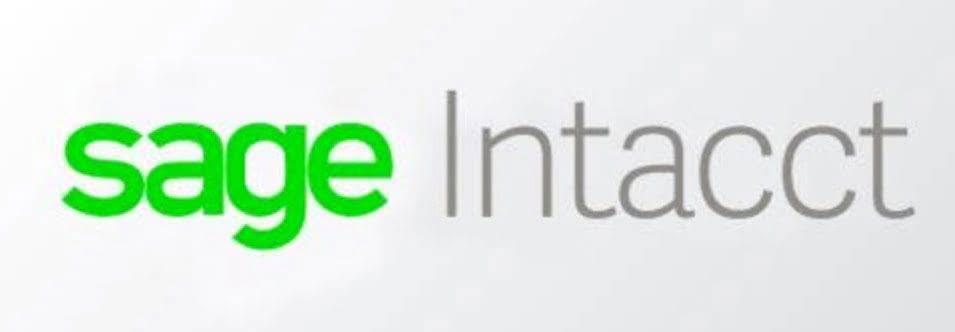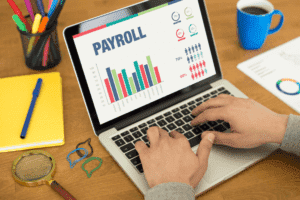Any estimates based on past performance do not a guarantee future performance, and prior to making any investment you should discuss your specific investment needs or seek advice from a qualified professional.
Seasonal and industry impacts
On the other hand, current assets in this formula are resources the company will use up or liquefy (converted to cash) within one year. In other words, “the quick ratio excludes inventory in its calculation, unlike the current ratio,” says Johnson. The current ratio of 1.0x is right on the cusp of an acceptable value, since if the ratio dips below 1.0x, that means the company’s current assets cannot cover its current liabilities. In this example, Company A has much more inventory than Company B, which will be harder to turn into cash in the short term.
Balance Sheet Assumptions
Empower yourself with the knowledge to navigate the complex terrain of financial analysis confidently. Therefore, when analyzing this liquidity ratio, it is crucial to consider the broader context and examine additional factors that may impact the company’s overall financial position. Some businesses can function well with a current ratio below 1 if they can turn inventory into cash faster than they need to pay their bills. In these cases, the actual cash generated from inventory sales may surpass its stated value on the balance sheet.
Great! The Financial Professional Will Get Back To You Soon.
A current ratio calculated for a company whose sales are highly seasonal may not provide a true picture of the business’s liquidity depending on the time period selected. To compare the current ratio of two companies, it is necessary that both of them use the same inventory valuation method. For example, comparing current ratio of two companies would be like comparing apples with oranges if one uses FIFO while other uses LIFO cost flow assumption for costing/valuing their inventories.
By Industry
For example, a current ratio of 4 means the company could technically pay off its current liabilities four times over. Generally speaking, having a ratio between 1 and 3 is ideal, but certain industries or business models may operate perfectly fine with lower ratios. Putting the above together, the total current assets and total current liabilities each add up to $125m, so the current ratio is 1.0x as expected.
The points below show the interpretation of the current ratio with respect to numerical results obtained from the current ratio Formula. Shaun Conrad is a Certified Public Accountant and CPA exam expert with a passion for teaching. After almost a decade of experience in public accounting, he created MyAccountingCourse.com to help people learn accounting & finance, pass the CPA exam, and start their career. A financial forecast tries to predict what your business will look like (financially) in the future—which is key for uncertain, economic times.
For instance, if a company has $20 million in current assets and $10 million in current debt, the current ratio is 2. For example, if a company’s current assets are $80,000 and its current liabilities are $64,000, its current ratio is 125%. If the current ratio of a business is 1 or more, it means it has more current assets than current liabilities (i.e., positive working capital).
Any cash that a firm may have on hand is of course on the list of short-term assets as well. The current ratio is an evaluation of a company’s short-term liquidity. In simplest terms, it measures the amount of cash available relative to its liabilities. The current ratio expressed as a percentage is arrived at by showing the current assets of a company as a percentage of its current liabilities. However, if the current ratio of a company is below 1, it shows that it has more current liabilities than current assets (i.e., negative working capital).
A high ratio can indicate that the company is not effectively utilizing its assets. For example, companies could invest that money or use it for research and development, promoting longer-term growth, rather than holding a large amount of liquid assets. Potential investors leveraging the current ratio should keep in mind that the assets of companies can vary quite a bit, and businesses with significantly different asset compositions can end up with the same current ratio. Another factor that may influence what constitutes a “good” current ratio is who is asking. Our current ratio calculator will allow you to calculate not only the current ratio but also the historical financial ratios as well as the year on year ratio changes. The calculator will then provide you with the trends and a graph using your financial year on year metrics.
The current ratio is one of many liquidity ratios that you can use to measure a company’s ability to meet its short-term debt obligations as they come due. The current ratio compares a company’s current assets to its current liabilities. Both of these are easily found on the company’s balance sheet, and it makes the current ratio one of the simplest liquidity ratios to calculate. Let’s look at some examples of companies with high and low current ratios. You can find these numbers on a company’s balance sheet under total current assets and total current liabilities. Some finance sites also give you the ratio in a list with other common financials, such as valuation, profitability and capitalization.
The current ratio relates the current assets of the business to its current liabilities. The value of current assets in the restaurant’s balance sheet is $40,000, and the current liabilities are $200,000. The current ones mean they can become cash or be paid in less than a year, respectively. Google and FedEx have very little in inventory or prepaid assets, so their quick ratios aren’t far off from their current ratios. Learn the optimal frequency for recalculating current ratios to stay on top of your financial health. In this respect, the quality of a firm’s assets compared to its obligations needs to be taken into account by financial analysts.
You should also worry if you’re dealing with a company that relies on vendors to finance much of the cash, such as if they provide credit for goods that end up being sold to the end customer. Both of these indicators are applied to measure the company’s liquidity, but they use different formulas. In the numerator, the current ratio takes into account all current assets while the numerator of the quick ratio considers only assets that are liquid (cash and cash equivalent, marketable securities, accounts receivable). To measure solvency, which is the ability of a business to repay long-term debt and obligations, consider the debt-to-equity ratio. This ratio compares a company’s total liabilities to its total equity. It measures how much creditors have provided in financing a company compared to shareholders and is used by investors as a measure of stability.
You will also learn how to add the formula to your spreadsheet to automatically perform current ratio calculations. Additionally, you will learn how tools like Google Sheets and Layer can help you set up a template and automate data flows, calculation updates, and sharing. Discover the implications of an excessively high current ratio and how to strike the right balance. A ratio below 1 suggests potential insolvency, while a ratio equal to 1 is considered safe. However, investors may not always view a high working capital ratio favorably, as it could imply cash hoarding or lack of reinvestment.
Upgrading to a paid membership gives you access to our extensive collection of plug-and-play Templates designed to power your performance—as well as CFI’s full course catalog and accredited Certification Programs. As for the projection period – from Year 2 to Year 4 – we’ll use a step function for each B/S line item, with the Year 1 figures serving as the starting point. With that said, the required inputs can be calculated using the following formulas.
The analyst would, therefore, not be able to compare the ratio of two companies even in the same industry. You calculate your business’s overall current ratio by dividing your current assets by your current liabilities. https://www.bookkeeping-reviews.com/ The company has just enough current assets to pay off its liabilities on its balance sheet. In this example, although both companies seem similar, Company B is likely in a more liquid and solvent position.
But this compensation does not influence the information we publish, or the reviews that you see on this site. We do not include the universe of companies or financial offers that may be available to you. A break-even analysis is a financial calculation used to determine a company’s break-even point. Get instant access to lessons taught by experienced private equity pros and bulge bracket investment bankers including financial statement modeling, DCF, M&A, LBO, Comps and Excel Modeling.
As the amount expires, the current asset is reduced and the amount of the reduction is reported as an expense on the income statement. Here, we’ll go over how to calculate the current ratio and how it compares to some other financial ratios. A ratio greater than 1 means that the company has sufficient current assets to pay off short-term liabilities. Below is a video explanation of how to calculate the current ratio and why it matters when performing an analysis of financial statements. The current ratio can be a useful measure of a company’s short-term solvency when it is placed in the context of what has been historically normal for the company and its peer group. It also offers more insight when calculated repeatedly over several periods.
In the first case, the trend of the current ratio over time would be expected to harm the company’s valuation. Meanwhile, an improving current ratio could indicate an opportunity to invest in an undervalued stock amid a turnaround. A high current ratio is not beneficial to the interest of shareholders. This is because it could mean that the company maintains an excessive cash balance or has over-invested in receivables and inventories. The current assets are cash or assets that are expected to turn into cash within the current year.
Since the current ratio compares a company’s current assets to its current liabilities, the required inputs can be found on the balance sheet. Investors can use this type of liquidity ratio to make comparisons with a company’s peers and competitors. Ultimately, the current ratio helps investors 4 factors influencing local government financial decisions understand a company’s ability to cover its short-term debts with its current assets. Walmart has the lowest current ratio– with its current assets being less than its current liabilities. This is not a good sign for its ability to pay its current debt obligations as they are due.
- One limitation of the current ratio emerges when using it to compare different companies with one another.
- In the first case, the trend of the current ratio over time would be expected to harm the company’s valuation.
- For example, a current ratio of 4 means the company could technically pay off its current liabilities four times over.
If a retailer doesn’t offer credit to its customers, this can show on its balance sheet as a high payables balance relative to its receivables balance. Large retailers can also minimize their inventory volume through an efficient supply chain, which makes their current assets shrink against current liabilities, resulting in a lower current ratio. Current assets listed on a company’s balance sheet include cash, accounts receivable, inventory, and other current assets (OCA) that are expected to be liquidated or turned into cash in less than one year. That brings Walmart’s total current liabilities to $78.53 billion for the period. As you have seen, the current ratio is one of various ratios commonly used by accountants and investors to evaluate a company’s financial health in terms of its liquidity.
Business owners and the financial team within a company may use the current ratio to get an idea of their business’s financial well-being. Accountants also often use this ratio since accounting deals closely with reporting assets and liabilities on financial statements. On the other hand, a company with a current ratio greater than 1 will likely pay off its current liabilities since it has no short-term liquidity concerns. An excessively high current ratio, above 3, could indicate that the company can pay its existing debts three times. It could also be a sign that the company isn’t effectively managing its funds. A company with a current ratio of less than one doesn’t have enough current assets to cover its current financial obligations.
The current ratio also sheds light on the overall debt burden of the company. If a company is weighted down with a current debt, its cash flow will suffer. Current assets (also called short-term assets) are cash or any other asset that will be converted to cash within one year.
Mercedes Barba is a seasoned editorial leader and video producer, with an Emmy nomination to her credit. Presently, she is the senior investing editor at Bankrate, leading the team’s coverage of all things investments and retirement. The offers that appear on this site are from companies that compensate us.
To assess this ability, the current ratio compares the current total assets of a company to its current total liabilities. Liquidity refers to how quickly a company can convert its assets into cash without affecting its value. Current assets are those that can be easily converted to cash, used in the course of business, or sold off in the near term –usually within a one year time frame. Current assets appear at the very top of the balance sheet under the asset header. It is calculated by dividing a company’s current assets by its current liabilities. Current assets include items like cash, accounts receivable, and inventory, while current liabilities consist of obligations due within the next year, such as accounts payable.
Using Layer, you can control the entire process from the initial data collection to the final sharing of the results. Automate the tedious tasks to focus on staying updated to make informed decisions. Let’s say you want to calculate the current ratio for Company A in Google Sheets.
If current liabilities exceed current assets, the current ratio falls below 1, signaling potential trouble in meeting short-term obligations. Some industries may collect revenue on a far more timely basis than others. However, other industries might extend credit to customers and give them far more time to pay.
The current ratio is used to evaluate a company’s ability to pay its short-term obligations, such as accounts payable and wages. The higher the result, the stronger the financial position of the company. A current ratio of 1.5 would indicate that the company has $1.50 of current assets for every $1 of current liabilities. For example, suppose a company’s current assets consist of $50,000 in cash plus $100,000 in accounts receivable. Its current liabilities, meanwhile, consist of $100,000 in accounts payable.
You have to know that acceptable current ratios vary from industry to industry. However, special circumstances can affect the meaningfulness of the current ratio. For example, a financially healthy company could have an expensive one-time project that requires outlays of cash, say for emergency building improvements.
One limitation of the current ratio emerges when using it to compare different companies with one another. Businesses differ substantially among industries; comparing the current ratios of companies across different industries may not lead to productive insight. A current ratio that is in line with the industry average or slightly higher is generally considered acceptable. A current ratio that is lower than the industry average may indicate a higher risk of distress or default. Similarly, if a company has a very high current ratio compared with its peer group, it indicates that management may not be using its assets efficiently. As an investor, you should note that a current ratio may be “good” in one field and only “fair” (or poor) in another, and vice versa.
Factors such as the quality of assets and efficient working capital management should be considered. Learn the skills you need for a career in finance with Forage’s free accounting virtual experience programs. This account is used to keep track of any money customers owe for products or services already delivered and invoiced for. XYZ Company had the following figures extracted from its books of accounts. Enter your name and email in the form below and download the free template now! You can browse All Free Excel Templates to find more ways to help your financial analysis.
Businesses may experience fluctuations in their current ratio as a result of seasonal changes. For example, a retail business may have a higher level of inventory during the holiday season, which could impact its ratio of assets to liabilities. Further, a company may need to borrow more during slow seasons to fund its operations, which could also impact the current ratio. Another ratio, which is similar to the current ratio and can be used as a liquidity measure, is the quick ratio.
An investor can dig deeper into the details of a current ratio comparison by evaluating other liquidity ratios that are more narrowly focused than the current ratio. Current or short-term assets are those that can be converted to cash in less than one year, and also those that might be used up in a year in the course of running the company. They include market assets such as bonds or CDs, any debts they have yet to collect, and prepaid amounts (such as if future taxes were paid the year before).
In the above example, XYZ Company has current assets 2.32 times larger than current liabilities. In other words, for every $1 of current liability, the company has $2.32 of current assets available to pay for it. The business currently has a current ratio of 2, meaning it can easily settle each dollar on loan or accounts payable twice. Clearly, the company’s operations are becoming more efficient, as implied by the increasing cash balance and marketable securities (i.e. highly liquid, short-term investments), accounts receivable, and inventory. If a company’s current ratio is less than one, it may have more bills to pay than easily accessible resources to pay those bills. In its Q fiscal results, Apple Inc. reported total current assets of $135.4 billion, slightly higher than its total current assets at the end of the last fiscal year of $134.8 billion.
This is a massive number compared to what it needed for its daily operations. Until they paid their first dividend the next year, bought back billions of dollars worth of shares, and made a few smart acquisitions, no one knew what they were planning to do. Near the end of 2020, their current ratio sat at a much more modest 2.5. For information pertaining to the registration status of 11 Financial, please contact the state securities regulators for those states in which 11 Financial maintains a registration filing.
Read More






